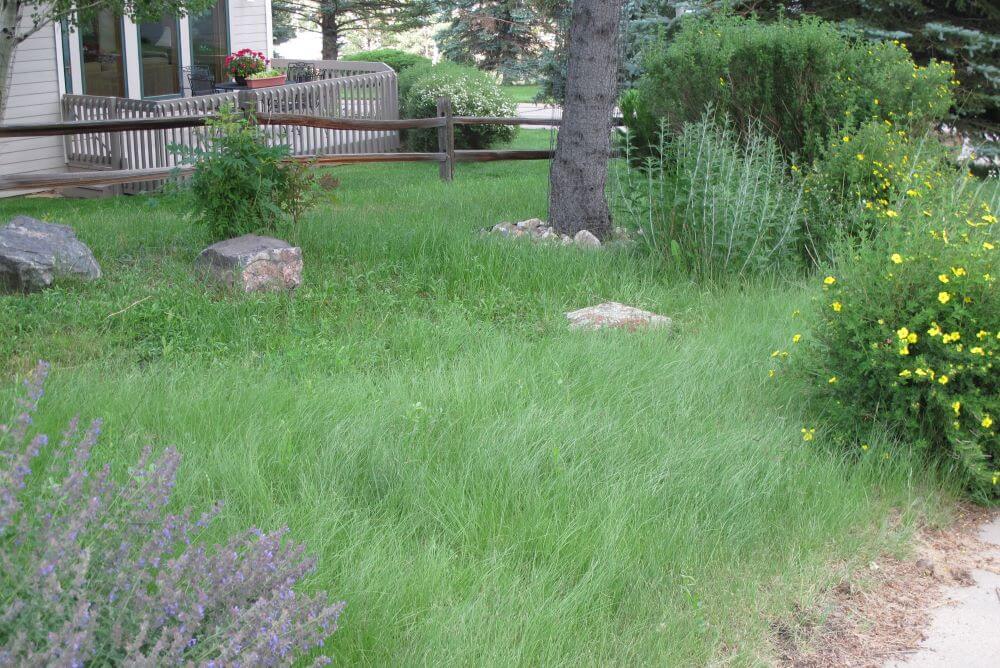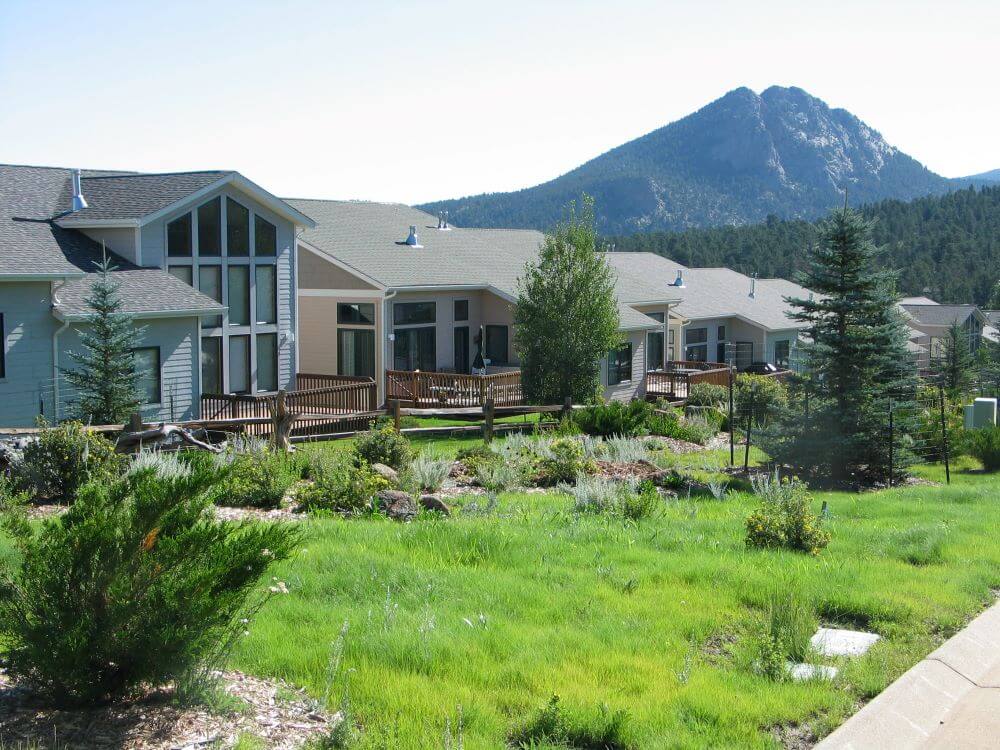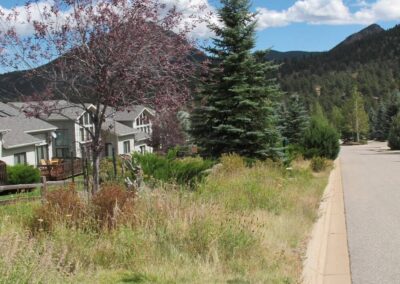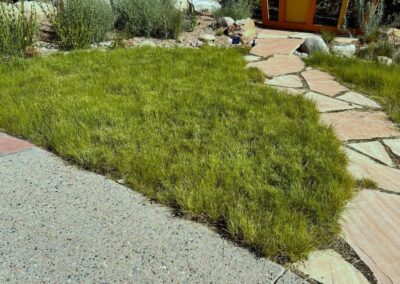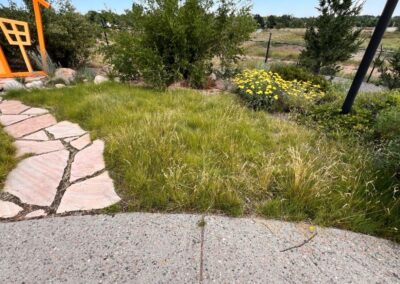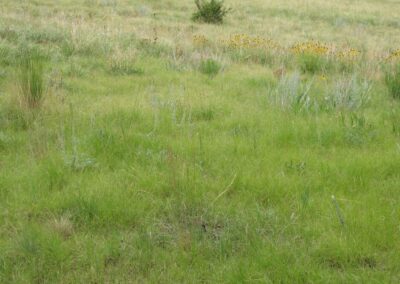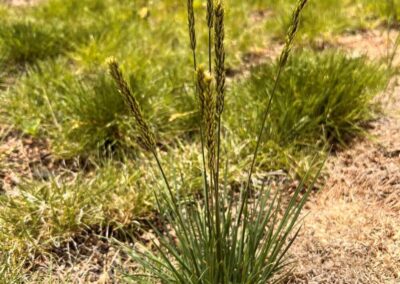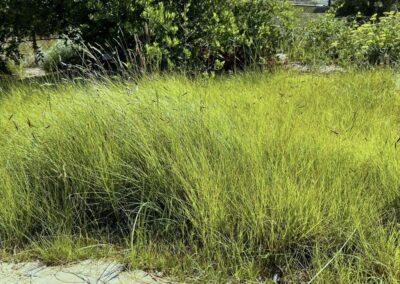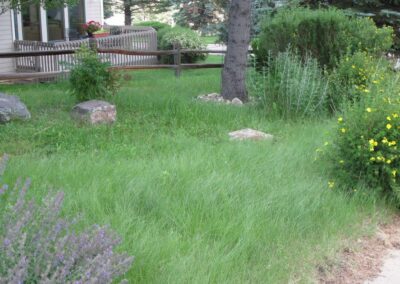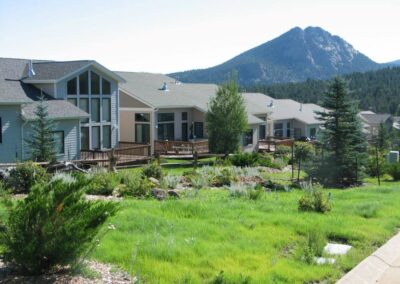Montane Short Grasses Mix
Mixes of montane short grasses combine cool- and warm-season bunch grasses, adpated to higher elevetions, that stay short and are fairly drought tolerant.
Active Growth
April-November
Light Needs
Part Sun – Full Sun
Origin
Native
Best For:
- Low-maintenance landscapes
- Sites with varied soils
- Areas where a short grass height is desired
- Mixed conifer openings
- Landscapes up to 9,000 feet
Not Suited For:
- Very hot, sunny landscapes
- Heavy-use areas
- Areas where rapid growth is required
- Landscapes that will need to be mowed short frequently
Tolerates: Elevations 6,000-9,000 feet, mixing with wildflowers, shade, rocky/gravely soils and temporary drought.
Irrigation need (FRONT RANGE)
No Irrigation
Turf Irrigation
Water Use: Water once to twice per week after establishment to maintain a green appearance
Using Montane Short Grasses Mix
Montane short grasses mix is a great option for low-traffic, naturalistic landscapes. These bunch grasses are adapted to conifer forest openings at elevations between 6,000 and 9,000 feet, and may tolerate light shade but will grow best in full sun. They turn green in early April and brown in late October. This type of mix is not tolerant to foot traffic, so does best in front yards or areas where people and pets don’t walk repeatedly.
Montane Shortgrass Attributes
- Mixture of cool- and warm-season grasses
- Dark green to blue-green in color
- Leaf height of 6-12 inches and an overall height of 12-18 inches with seedheads
- Variation of grass blade textures, sizes, and color
- Can provide a uniform stand of grass but will be less dense at ground level
- Does not tolerate salts, like roadway salts used for snow/ice removal, or pet urine
Installing Montane Shortgrass
- Installed by seed only
- Can be seeded April 1 to September 15
- Should be seeded at a depth of 0.25 inches; seeding too deep can result in poor germination
- Seeding rate for landscape projects is 2 to 3 lbs per 1,000 square feet of area
- Cultivars and notes:
- A common mixture consists of Rocky Mountain fescue, Sandberg bluegrass, prairie Junegrass, and blue grama
General
Montane short grasses mixtures can germinate quickly, as little as five days after seeding.
Weed Management
Proactive weed management during establishment will result in healthy grass stands with minimal weed issues over time and is highly recommended.
Watering for Establishment
It’s important for uniform, successful germination that the soil is kept moist until seedlings emerge. In the first three weeks, keep the soil consistently moist but avoid runoff and pooling. In weeks four and five, moisten the soil daily to prevent new seedlings from dehydrating. Fix any irrigation problems as quickly as possible to prevent seedlings from drying out and dying.
Fertilizer During Establishment
Fertilizing new seedling stands helps them grow quickly so that their leaves fully cover the soil. Apply a controlled-release or organic fertilizer at planting OR fertilize regularly with a very light dose of quickly available fertilizer. A light dose of fertilizer can be applied as often as weekly, but at a significantly lower rate than standard lawn fertilization. Apply 0.1-0.2 pounds of nitrogen per 1,000 square feet each time the area is fertilized during the establishment period. Do not fertilize after mid-August.
Mowing During Establishment
These shorter grasses are unlikely to need mowing the year they are planted. If the grass grows tall enough to look unsightly or cause concern, mow it as high as possible, ideally so the grass is four to six inches tall after mowing. Mowing can be beneficial to create a more tidy appearance and help with weed suppression.
Long-Term Watering
Montane shortgrass mixtures require about 15 inches of water per growing season or can be watered less if it is acceptable for them to turn brown during hotter, drier weather.
Mowing
Montane short grasses mixtures contain bunchgrasses that stay shorter, so it needs infrequent mowing. If you don’t like the appearance of the seedheads, it can be mowed infrequently to create a more uniform appearance.
Weed Control
Long-term weed control keeps grass healthy and attractive. Use weed control products that are safe for both cool- and warm-season grasses on this type of mixture.
Ideally, with proactive weed control early in the project, long-term weed control efforts can be minimal: spot-spraying troublesome plants. Pre-emergent weed control products can help prevent new weeds from growing—however, since they’ll also prevent new grass seed from germinating, only use them in established grass stands where you aren’t planning any overseeding or germination of additional grass seed.
Identify the weed species appearing in the area and include specific weed-control strategies for those types of weeds.
Fertilizing
For areas where montane short grasses mixture is used as a low-water groundcover, fertilize once or twice in spring when the grass is growing rapidly. Apply nitrogen at 1 lb/1000 square feet of area. Low-input, naturalized, or restored areas do not need to be fertilized at all, but may be less dense and develop some spaces between plants over time.
Start your project
Discover how to plan and implement a native grass project for long-term success.
